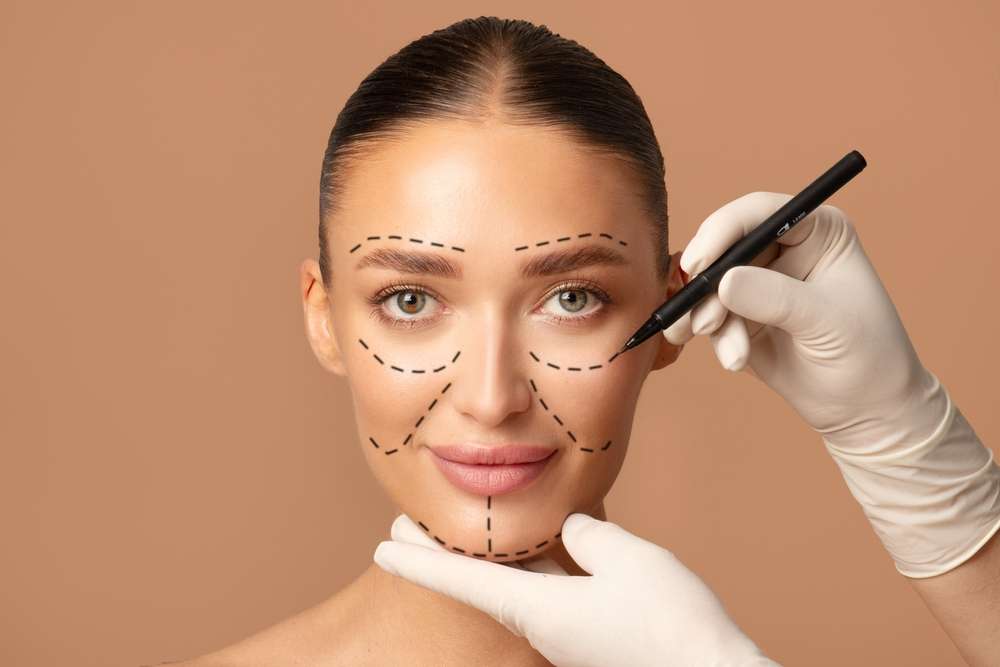Advanced Blepharoplasty Eye Lid Surgery
Blepharoplasty, commonly known as eyelid surgery, is a specialized surgical procedure designed to rejuvenate the appearance of the eyelids by removing excess skin, fat, and muscle. Advanced blepharoplasty techniques have evolved significantly over recent years, offering more precise results with shorter recovery times. This procedure addresses both cosmetic concerns and functional issues that can affect vision when excess tissue obstructs the visual field. With modern approaches, surgeons can now create natural-looking results that maintain the unique characteristics of a person's eyes while addressing signs of aging or genetic concerns.

What Is Advanced Blepharoplasty?
Advanced blepharoplasty represents the evolution of traditional eyelid surgery through refined techniques and technology. Unlike conventional approaches that sometimes resulted in a “pulled” or artificial appearance, advanced methods focus on preserving the natural contour and function of the eyelids while addressing aesthetic concerns. These techniques typically involve precise tissue manipulation, careful fat repositioning rather than simple removal, and strategic skin excision. Advanced blepharoplasty may incorporate laser technology, specialized instruments, or combination approaches that address multiple aspects of eyelid aging simultaneously. The procedure can be performed on upper eyelids, lower eyelids, or both, depending on the specific concerns of the patient and the surgeon’s assessment of anatomical needs.
How Does Eye Bag Removal Surgery Work?
Eye bag removal surgery specifically targets the puffy appearance beneath the eyes that can create a tired or aged look. This condition occurs when the fat pads that naturally cushion the eye within its socket begin to protrude through weakened tissues. During the procedure, surgeons access this area through a small incision, either inside the lower eyelid (transconjunctival approach) or just beneath the lash line (transcutaneous approach). The protruding fat is then either removed or repositioned to create a smoother transition between the lower eyelid and cheek. Advanced techniques often focus on fat preservation and redistribution rather than removal alone, as excessive fat removal can create a hollow appearance that may look unnatural or even more aged. The procedure may also address excess skin and strengthen supporting structures to provide comprehensive rejuvenation of the lower eyelid region.
Benefits of Advanced Blepharoplasty Techniques
Advanced blepharoplasty offers several advantages over traditional approaches, including more precise results and improved recovery experiences. One significant benefit is the preservation of orbital fat, which maintains natural volume while still addressing puffiness. This helps avoid the hollow-eyed appearance that could result from aggressive fat removal in conventional techniques. These advanced methods also typically result in less visible scarring, as incisions are strategically placed within natural creases or inside the eyelid. Additionally, modern techniques often incorporate measures to strengthen the supporting structures of the eyelid, potentially providing longer-lasting results. Functional improvements are another important benefit, as these procedures can significantly enhance peripheral vision by removing obstructing tissue, particularly in the upper eyelids.
Who Is a Candidate for Eyelid Surgery?
Ideal candidates for advanced blepharoplasty include individuals experiencing visible signs of eyelid aging such as excess skin, puffiness, or drooping that affects appearance or vision. Typically, candidates are in good general health, non-smokers, and have realistic expectations about surgical outcomes. Those with specific medical eye conditions such as dry eye, glaucoma, or detached retina require careful evaluation before proceeding with surgery. Age is not necessarily a limiting factor, as some individuals may benefit from the procedure in their 30s due to genetic factors, while others may not require intervention until their 50s or beyond. The determination of candidacy involves a comprehensive consultation with a qualified surgeon who will assess both anatomical factors and personal goals.
Recovery and Results from Advanced Blepharoplasty
Recovery from advanced blepharoplasty typically progresses through several phases. Initially, patients can expect some swelling, bruising, and mild discomfort that peaks within the first 48 hours. Cold compresses, head elevation, and prescribed medications help manage these symptoms. Within 5-7 days, most patients feel comfortable returning to social activities, though some residual bruising may remain. Full resolution of all swelling can take 2-3 weeks or longer in some cases. Results emerge gradually as healing progresses, with the final outcome becoming apparent after several months when all tissues have fully settled. The refined techniques used in advanced blepharoplasty often lead to more predictable healing with less prolonged swelling compared to traditional approaches. Results typically last several years, though the natural aging process continues, and factors like sun exposure, smoking, and skin characteristics influence longevity.
Cost Considerations for Advanced Blepharoplasty
The cost of advanced blepharoplasty varies significantly based on several factors including geographic location, surgeon expertise, facility fees, and the specific techniques employed. Understanding these variations helps patients plan appropriately for this investment in their appearance and confidence.
| Procedure Type | Average Cost Range | What’s Included |
|---|---|---|
| Upper Eyelid Blepharoplasty | $2,000 - $5,000 | Surgeon’s fee, anesthesia, facility fees |
| Lower Eyelid Blepharoplasty | $2,500 - $6,000 | Surgeon’s fee, anesthesia, facility fees |
| Combined Upper and Lower | $4,000 - $9,500 | Surgeon’s fee, anesthesia, facility fees |
| Advanced Techniques (laser, fat repositioning) | Additional $1,000 - $3,000 | Specialized equipment and surgeon expertise |
Prices, rates, or cost estimates mentioned in this article are based on the latest available information but may change over time. Independent research is advised before making financial decisions.
When considering the cost, it’s important to note that insurance typically does not cover cosmetic blepharoplasty. However, if the procedure addresses functional issues like vision obstruction from drooping upper eyelids, partial coverage may be available with proper documentation and testing. Many surgeons offer financing options to help manage these costs over time. The value of working with a board-certified surgeon experienced in advanced techniques often justifies the higher investment compared to discount providers, as complications or unsatisfactory results can be costly and difficult to correct.
Choosing a Qualified Surgeon for Advanced Blepharoplasty
Selecting an appropriately qualified surgeon represents one of the most important decisions in the blepharoplasty process. Patients should look for board certification in plastic surgery, ophthalmology with oculoplastic specialization, or facial plastic surgery. Experience specifically with advanced blepharoplasty techniques is crucial, as is a substantial portfolio of before-and-after photos demonstrating consistent results. During consultations, the surgeon should conduct a thorough examination of eyelid anatomy, discuss realistic expectations, and explain their recommended approach in detail. Personal rapport and communication style matter significantly, as this relationship requires trust and clear understanding. Patients benefit from researching potential surgeons’ credentials, reading reviews from previous patients, and potentially consulting multiple specialists before making their final decision.
This article is for informational purposes only and should not be considered medical advice. Please consult a qualified healthcare professional for personalized guidance and treatment.




